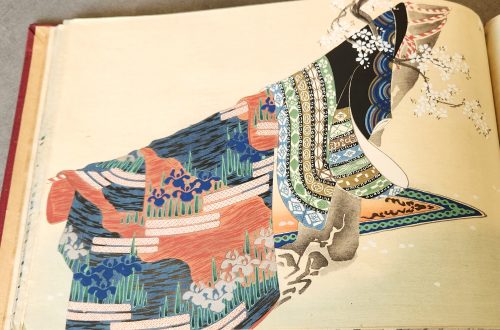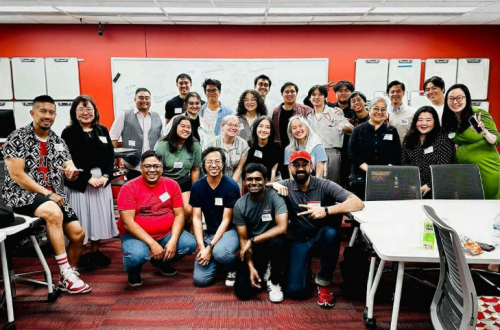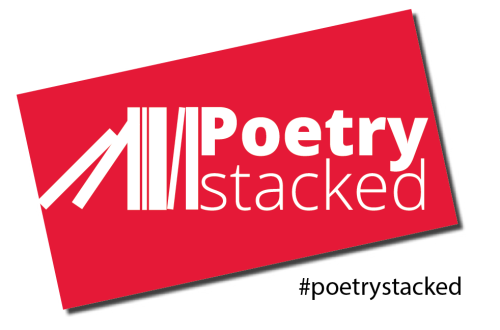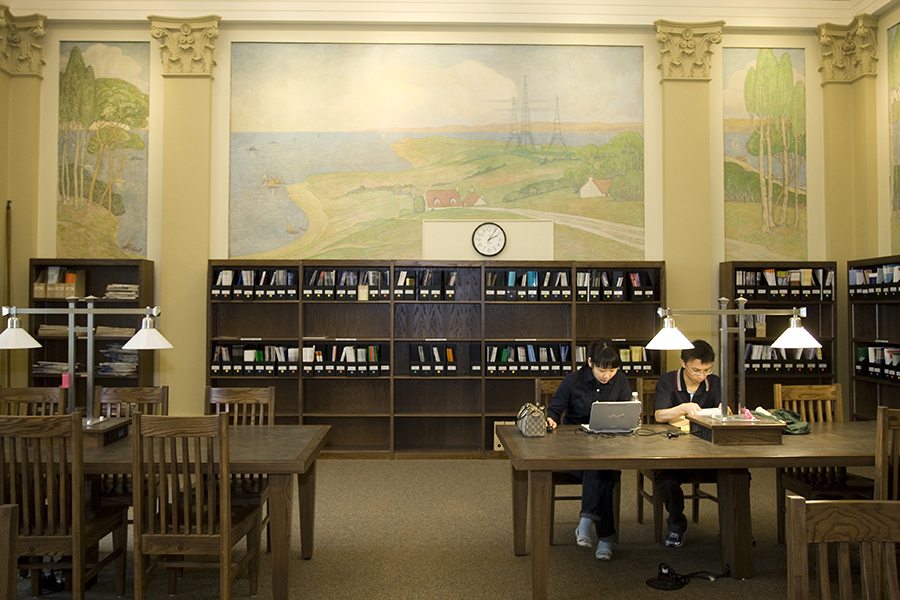
CEAS Library’s historic murals: engineering a restoration
By Ted Baldwin, Director of the College of Engineering and Applied Science Library
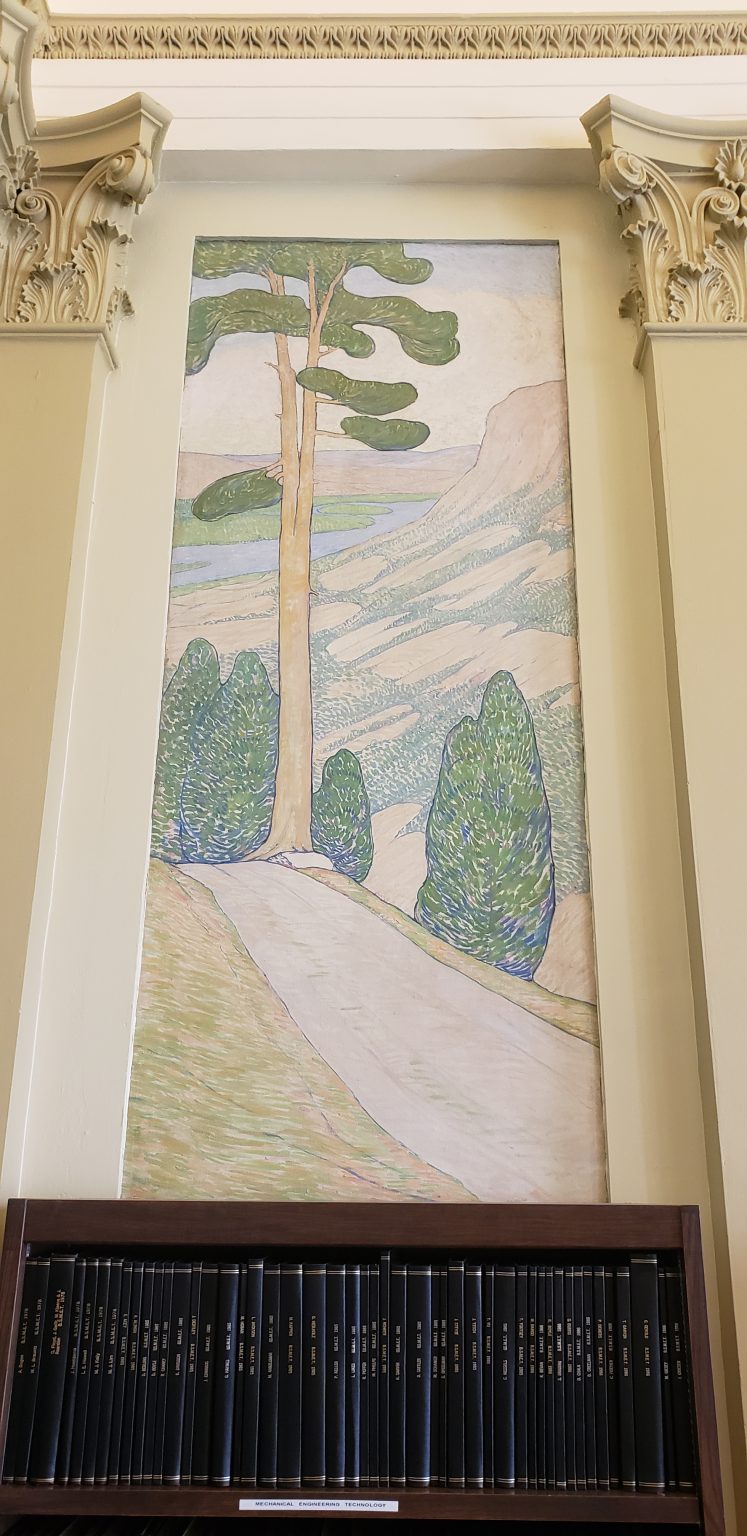
On the top floor of University of Cincinnati’s Baldwin Hall, the College of Engineering and Applied Science Library provides a sanctuary for study, learning and inspiration. (Read more about CEAS Library in the June 2023 Source). Throughout this space, many pieces from the university’s art collection adorn the walls, including paintings connected to Cincinnati history and the history of technology. The CEAS Library’s historic reading room, the original engineering library and a dedicated quiet space for study, contains a beautiful panorama of painted canvases showcasing technological innovations from more than 100 years ago. A larger panel in this vista, however, has been a blank wall for many years. A mystery surrounded both its absence and the engineering feat that was once visible there. In very recent developments, discoveries from archival collections have revealed more details on this missing panel, thereby opening up opportunities to once again make the piece whole.
The CEAS Library murals represent the first University of Cincinnati student-funded art acquisition. In May 1916, the senior class of engineering raised the funds for the work through a very successful Ohio River boat cruise that included live orchestra and dancing. The murals were completed and dedicated a year later. Francis Wiley Faig, painter of the murals, was well-regarded in Cincinnati art circles. Faig had been a favorite student of Cincinnati’s famed painter Frank Duveneck, who also attended the dedication of the murals. Faig also held deep connections to the college and its disciplines. Her husband, John T. Faig, was a professor of mechanical engineering at the UC College of Engineering from 1906-1918 and later the President of the Ohio Mechanics Institute (1918-1951).
Herman Schneider, former UC President and Dean of the College of Engineering and founder of UC’s groundbreaking model of cooperative education or “co-op,” stated in a 1917 College of Engineering annual report that the murals are “the romance of engineering … worked into beautiful scenic canvases.” In total, the mural panels measure 60’ wide x 7’5” tall. They were significant due to their combination of artistic expression and technological achievements and in their holistic presentation of innovation that spanned the continental United States. East and West coasts are placed on the side panels, with the far west represented on the now-missing panel. Cincinnati’s bustling Midwestern city scape is in the center, above and adjacent to the reading room’s entrance.
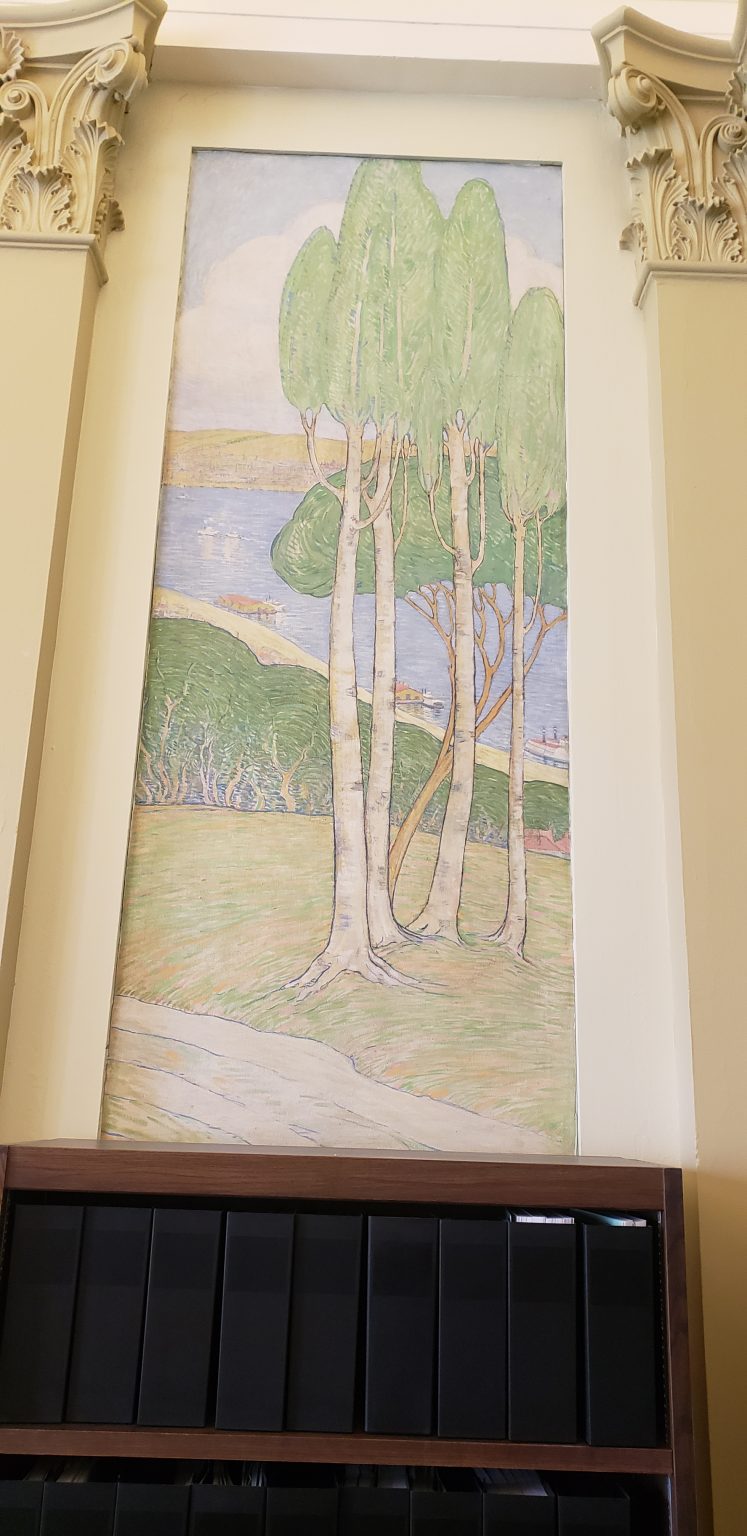
Technological achievements (1860s – 1910s) that are visible in the murals:
- World War I naval battleships called “dreadnoughts.”
- Guglielmo Marconi’s telegraph station installed at Cape Cod, Massachusetts.
- John A. Roebling’s suspension bridge spanning the Ohio River between Cincinnati and Covington, Kentucky.
- “Tall stacks” steam-powered riverboats.
- Early 20th-century skyscrapers similar to Cincinnati’s Union Central Building (now called Fourth and Vine Tower).
- A transcontinental railroad hugging a curved hill.
In the late 1990s, a total renovation of Baldwin Hall prompted an effort to conserve the existing murals and remove years of cigarette smoke, grime and yellow varnish. Art conservators carefully clean the murals and bring back to view the original pastel colors and fine painted details. This effort required significant funding support from private donors and resulted in a first leap forward in restoring a ‘crown jewel’ of the university.
Returning to the present discoveries. At present, only ten of the original eleven mural panels are visible. The missing panel is believed to have been damaged beyond repair in the mid-1900s, and it was rumored to have shown the engineering feat of a ‘colossal dam.’ While conducting extensive research on the university’s art collection, CEAS Library Director Ted Baldwin located primary source materials that confirmed the intended structure for the missing mural panel – the Arrowrock Dam, opened in 1915 and located near Boise, Idaho. Through this research, he also grew connections with others at UC and gained access to a previously untapped collection of black & white photographs showing UC’s campus in the 1910s-1920s. These images were taken by Charles H. Longley & Co., a Cincinnati firm specializing in commercial photography. They showed detailed images of the murals around the time of their unveiling — including an image of the missing “colossal dam” panel! Comparing these pictures to those of the actual Arrowrock Dam confirmed that this was indeed the intended subject. With this evidence now in hand, we were inspired to share this amazing discovery, expand public interest in the murals and their significance to UC and the region, and to pursue future fundraising efforts for a professional restoration and recreation of the missing panel. Working together, we want to bring a new era to this work and complete the mural’s vista.
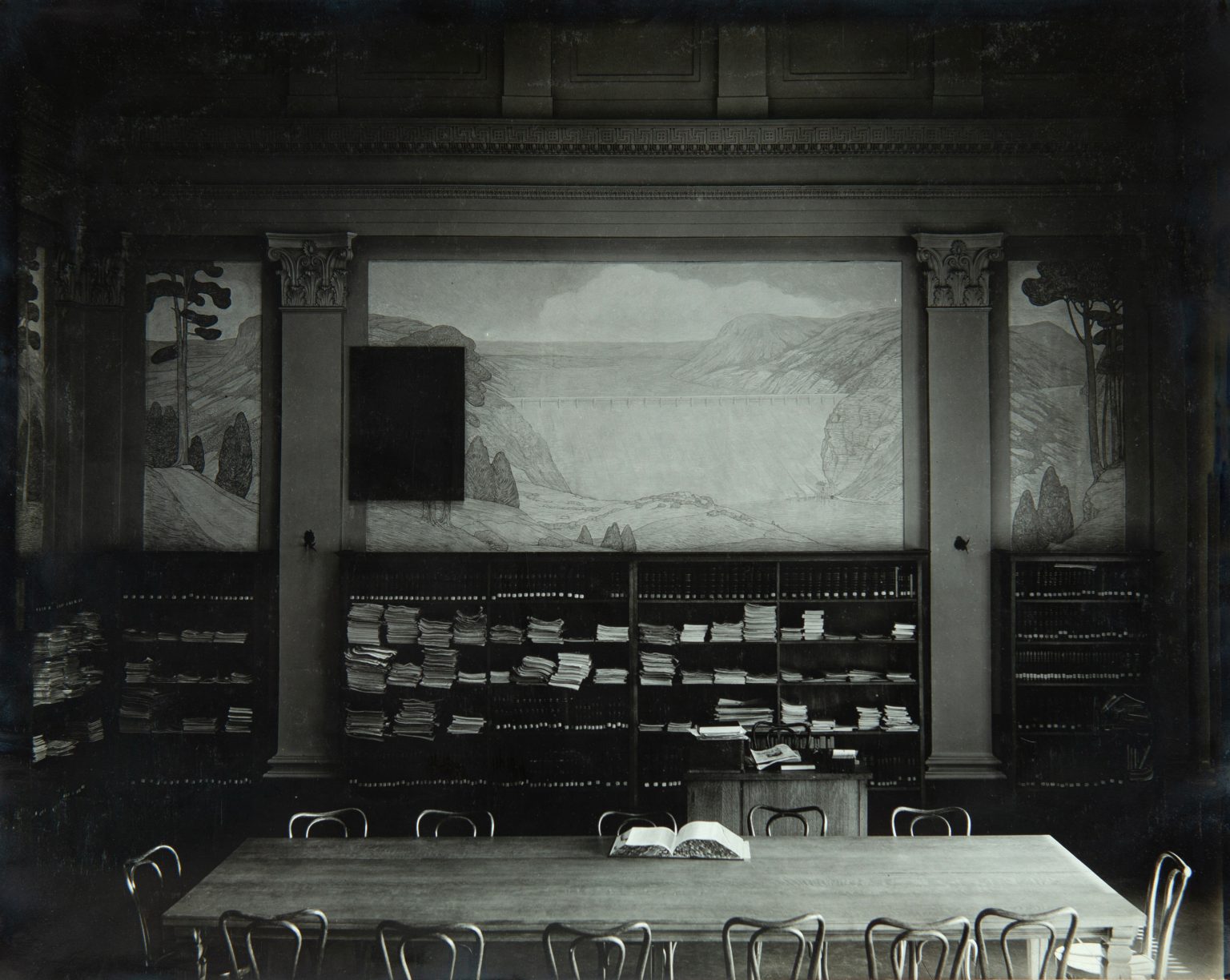
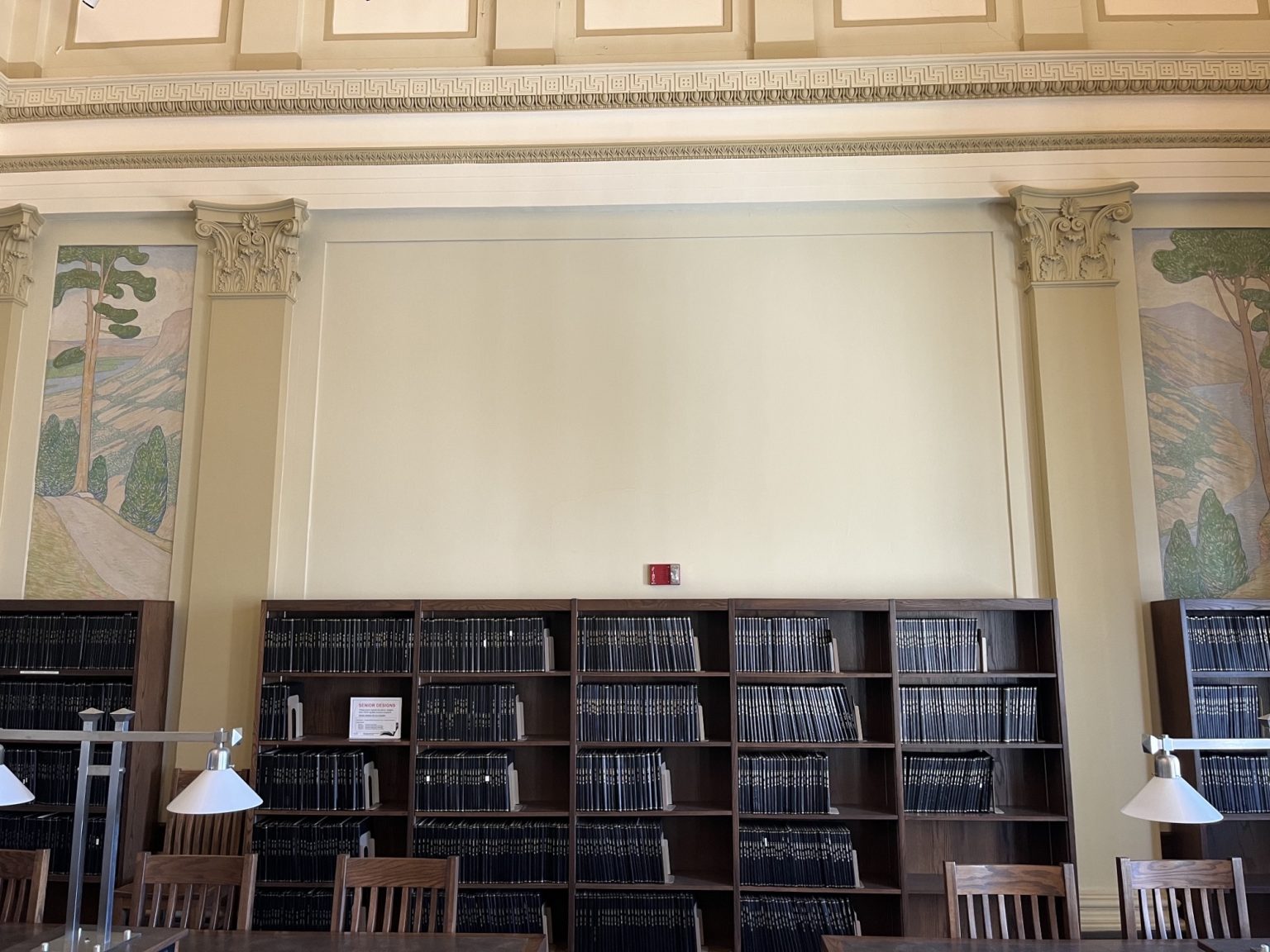
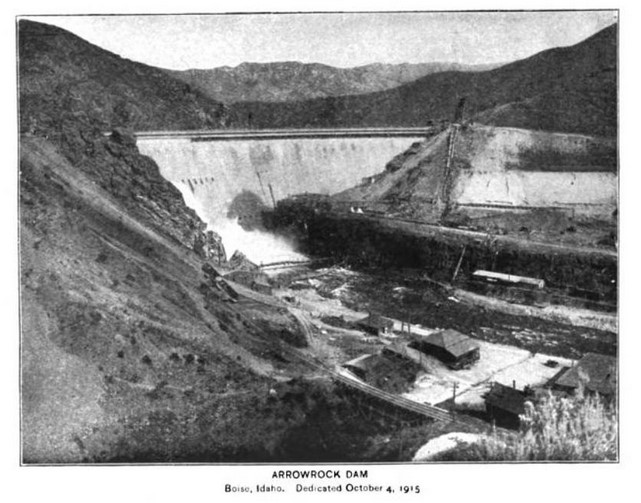
We invite you to reach out to view the murals and learn more about our efforts to embark on an initiative to complete the panorama! Contact Ted Baldwin, Director of the College of Engineering and Applied Science Library, at Ted.Baldwin@uc.edu .
